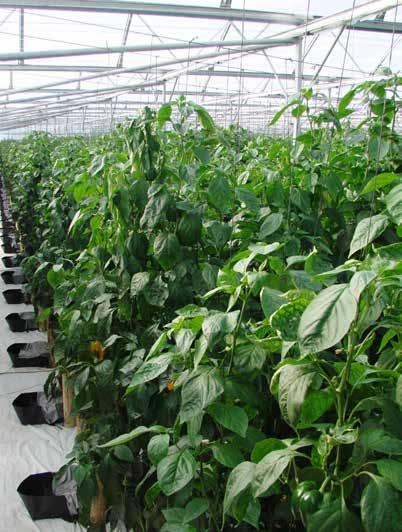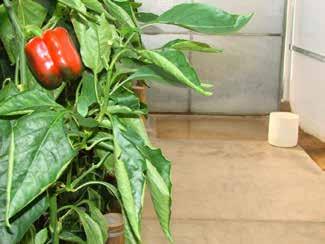
3 minute read
IPM and plant hygiene in under protected cultivation reiterated
Integrated pest management (IPM) offers a practical method for the effective management of pests under greenhouses and cannot be over-emphasized more. Through the adoption of sound cultural practices and monitoring techniques, accurate problem identification, and timely implementation and evaluation of appropriate management strategies, growers can improve vegetable production while minimizing their reliance on routine pesticide applications.
IPM and plant hygiene in
Advertisement
under protected cultivation reiterated
keeping IPM measures high on your daily priority list, pays its dividends in terms of quality and quantity of product.
IPM makes use of many different management options: cultural, physical, mechanical, biological and chemical. Routine crop inspection alerts growers to developing pest and cultural problems while they are still minor and easily manageable. early detection and intervention is the foundation of an IPM programme. Greenhouse management for the control of insects and diseases depends on: the local climate; external disease and insect pressure; the greenhouse structural design; availability of climate control equipment; and the skill level of the greenhouse workers. Sanitation It is important to keep the area around the exterior and interior of the greenhouse free from weeds and other plants that could harbour pests. An inventory should be made of plants in the area around the greenhouse to determine their relative risk as a pest harbour: remove high risk plants, with the exception of those that could attract natural enemies and pollinators. Airlock entrance walk-in doorways provide an easy entrance for many pests; growers need to evaluate strategies to reduce the likelihood of pest entrance.
In greenhouses with fan and pad ventilation, an airlock entrance room is essential: attached to the 400 GAPs for greenhouse vegetable crops: Principles for Mediterranean climate areas exterior of the greenhouse and enclosing the entry doorway, its double-door system allows workers to enter the airlock room and close the outside door behind them before entering the greenhouse production area. Without the airlock room, the fans draw air in through the unprotected doorway, rather than through the screened opening at the opposite end of the greenhouse, and it is common to see pest infestations beginning in plants close to an unprotected doorway. even in passively ventilated greenhouses, a secure entrance room is important to regulate the easy entrance of pests to the production area. Such rooms can also be used as a footbath and handwashing area or for any other sanitation practices for workers.
INSECT SCREENING
Screens with a fine mesh to keep insects out of the greenhouse can be an important element in an IPM programme and may be used effectively in both passively ventilated and fan and pad greenhouses. Any screens added to a ventilation opening will reduce airflow through that opening. It is therefore important to follow the manufacturer’s recommendations to increase the surface area covered by the screen to compensate for the reduction in airflow, which in turn can burn fan motors or reduce cooling by reducing ventilation.
REFLECTIVE OR METALLIZED MULCHES
Highly reflective or metallized plastic mulches have been used in agriculture for many purposes and are particularly effective in reducing the entry of whitefly and thrips. Combining screening and
If pest populations build to a threshold level requiring control measures, growers must be prepared for the immediate implementation of a control plan taking account of the current specific spray or biological control recommendations: Choose either an IPm or traditional pesticide strategy.
A foot bath at the entrance is absolutely necessary to comply with sanitary measures in a greenhouse.











